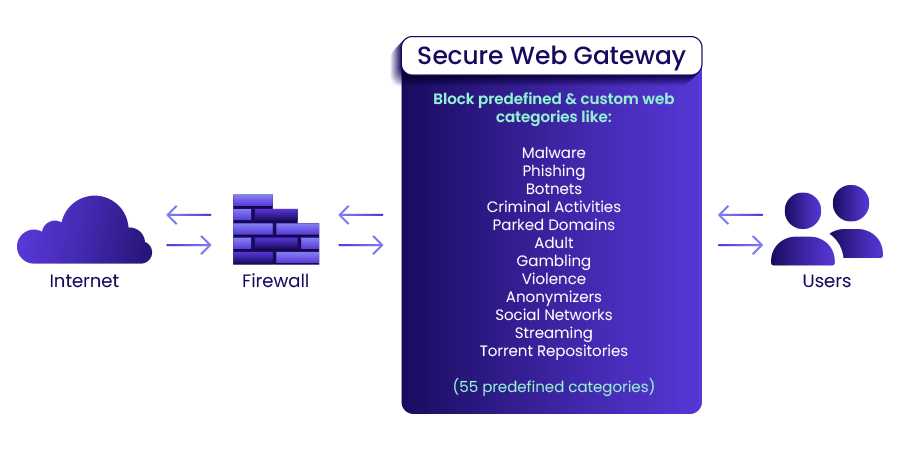How MSPs Can Detect and Prevent Ransomware Attacks
In today’s digital landscape, ransomware attacks have become a pervasive threat to businesses of all sizes. Managed Service Providers (MSPs) play a crucial role in protecting their clients from these malicious attacks. By implementing robust ransomware prevention strategies, MSPs can safeguard their clients’ data and ensure business continuity. In this comprehensive guide, we will explore […]
Author
Date
Category
All Categories
- AI-powered security
- Attacks & Threats
- Cybersecurity
- Hybrid Cloud
- Network
- Network Firewall
- Network Protection
- News
- Remote Workforce
- Security
- Zero Trust
Contents
Popular Posts
Product
Join the Newsletter

In today’s digital landscape, ransomware attacks have become a pervasive threat to businesses of all sizes. Managed Service Providers (MSPs) play a crucial role in protecting their clients from these malicious attacks. By implementing robust ransomware prevention strategies, MSPs can safeguard their clients’ data and ensure business continuity. In this comprehensive guide, we will explore effective strategies for detecting, preventing, and responding to ransomware incidents.
What is Ransomware?
Ransomware, a type of malicious software wielded by cybercriminals, encrypts a victim’s data, holding it hostage. Once the data is compromised, the attacker demands a ransom, typically in cryptocurrency, for its release. Failure to pay may lead to threats of data deletion or public exposure. In today’s data-driven business landscape, understanding how to prevent ransomware is critical, as an attack can lead to dire financial losses, regulatory penalties, and tarnished reputations.
Securing Against Ransomware: MSP Best Practices
1. Regular Training and Education
Education stands as the primary defense against ransomware, with regular phishing awareness and cyber incident response training for both MSPs and their clients drastically lowering the odds of a successful attack. Such programs should emphasize the recognition of suspicious emails and websites, adherence to safe internet practices, and the critical role of reporting potential threats, thereby enhancing email security awareness.
2. Robust Security Software
Investing in advanced anti-ransomware software is pivotal for robust ransomware prevention. This software must excel in filtering malicious emails, neutralizing threats, and blocking ransomware from self-installing. It should also deliver multi-layer ransomware protection, offering real-time defense against viruses, phishing, and other emerging threats.
3. Regular Updates and Patches
Cybercriminals often leverage software vulnerabilities to initiate ransomware attacks, making patch management and vulnerability management key components of a solid cybersecurity strategy. It’s imperative to keep all systems and applications, including antimalware and antivirus solutions, updated with the latest security patches to maintain optimal cyber hygiene services.
4. Comprehensive Backup Strategy
A comprehensive backup strategy is paramount in ransomware attack prevention. Regular backups are a failsafe, ensuring data recovery even when primary systems are compromised. MSPs should promote a multi-faceted approach to backups, advocating for a combination of on-premise, off-site, and cloud-based storage solutions as part of preventing ransomware attacks.
Detecting Ransomware Attacks
Early detection of a ransomware attack can drastically mitigate its consequences. Indicators of an attack often include unusual system behavior that can be identified through diligent malware analysis and endpoint detection and response, which are integral to the operations of a security operations center.
-
Slow system performance
-
Unusual network traffic patterns
-
Unexpected system reboots
-
Inability to access certain files or directories
-
Altered file extensions
MSPs should implement monitoring systems and intrusion detection tools to identify these indicators and take prompt action. By incorporating network segmentation and privileged access management, they can enhance their incident response plans and strengthen their overall cybersecurity posture.
In today’s digital landscape, ensuring robust cybersecurity measures is non-negotiable, and Timus emerges as a stalwart in this arena with its comprehensive suite of protective features. Boasting network-level antivirus and web filtering capabilities, Timus goes beyond conventional defenses by offering an additional layer of safeguarding against evolving online threats. Moreover, its incorporation of SSL inspection fortifies security protocols, enabling automatic blocking of malicious sites by default. Timus’s Secure Web Gateway (SWG) stands as a formidable shield for users and devices alike, meticulously monitoring and filtering internet traffic to prevent access to harmful websites and thwart potential malware infiltrations. With real-time filtering capabilities extending even to encrypted content through SSL/TLS inspection, Timus ensures a proactive approach to web security, setting a new standard for safeguarding digital experiences.

Responding to a Ransomware Attack
Despite all preventive measures, a ransomware attack might still occur. In such a scenario, responding quickly and effectively is crucial. MSPs should have a clear incident response plan, which includes the steps outlined in a comprehensive cybersecurity framework and is a key part of any ransomware response strategy.
- Isolate the affected systems to prevent the ransomware from spreading.
- Identify the type of ransomware to determine the appropriate response.
- Report the incident to the relevant authorities and inform all affected parties.
- Restore the affected systems from backups after ensuring they are free from malware.
- Conduct a post-incident analysis to identify the cause of the breach and strengthen defenses.
FAQ
Indeed, MSPs can actively defend against ransomware attacks by implementing robust security measures, providing regular training and education, maintaining up-to-date systems and software, and adopting a comprehensive backup strategy as part of their approach on how to protect against ransomware.
Ransomware attacks can be detected early by implementing monitoring systems and intrusion detection tools, which are integral to a security operations center. Signs of a potential attack include slow system performance, unusual network traffic, unexpected system reboots, and inability to access certain files, prompting the need for endpoint detection and response.
In response to a ransomware incident, MSPs should follow their ransomware playbook by isolating the affected systems, identifying the type of ransomware, reporting the incident, restoring systems from backups, and conducting a post-incident analysis as part of their incident response plans to mitigate ransomware.
Signs of a potential ransomware attack include slow system performance, unusual network traffic patterns, unexpected system reboots, inability to access certain files, and altered file extensions. Recognizing these signs through endpoint detection and response and network segmentation can enable a security operations center to respond swiftly. Ransomware attacks can be devastating, but with the right knowledge and tools, MSPs can effectively stop ransomware. By understanding the nature of ransomware, implementing best practices for prevention, staying vigilant for early signs of an attack, and responding effectively, MSPs can significantly reduce the risk and impact of these cyber threats.
Get Started with Timus
Zero Trust. Adaptive Cloud Firewall. Secure Remote Access. In one.
